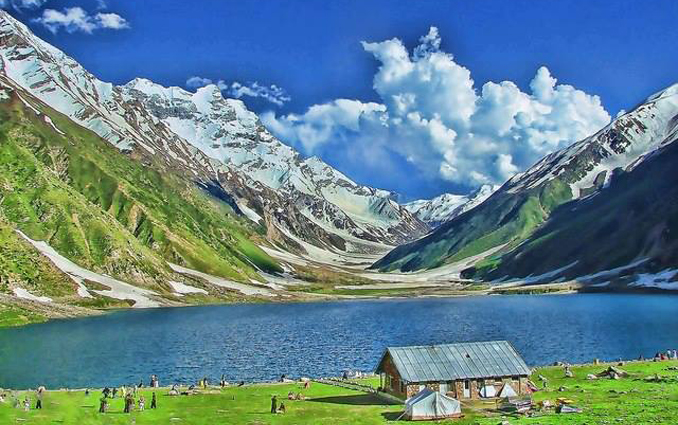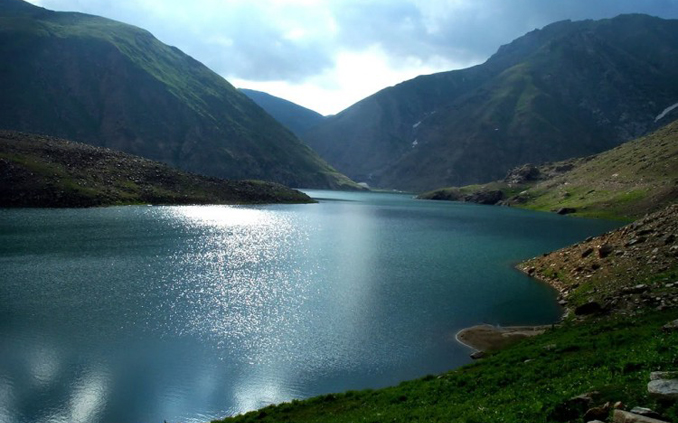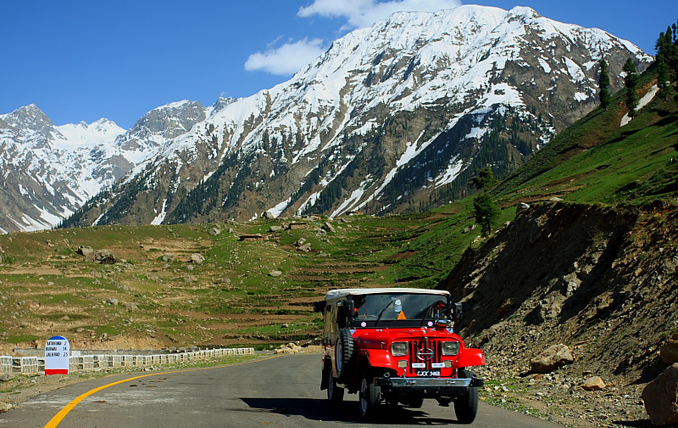Written by: Omer Qayyum and Amna Javed
Posted on: March 06, 2015 | 
Naran Valley
A visit to Naran Valley remains incomplete without seeing the famous Lake Saif-ul-Malook. The magical ambiance of this lake is enough to mesmerize any soul. According to myth, the lake has been named after Prince Saif-ul-Malook, who spotted a mountain fairy here, and fell in love with her. The clear blue water of Lake Saif-ul-Malook reflects the surrounding mountains, providing a breathtaking view. Shaped like a bowl, the lake receives water from surrounding glaciers and peaks, forming one of the most beautiful swamps in the country. Boating facility has been provided at the lake, but due to its depth and the lack of proper emergency equipment, tourists are reluctant to indulge in such an activity.
 |
Lake Saif-ul-Malook |
The majestic lake is accessible either by jeeps or through trekking, which takes approximately two hours from Naran. As there is no proper road leading up to the lake, there is a monopoly of jeep drivers on this dangerous track, resulting in the exploitation of tourists. There is a dire need to construct a proper road in the area, as well as to provide other important infrastructural facilities, such as affordable guesthouses or hotels for visitors. Due to the high cost of hotels and meals, expenses escalate during peak seasons and limit options for tourists.
The beauty of Lake Saif-ul-Malook is fading due to poor administration, lack of interest in protecting the environment, and the careless attitude of visitors. The government and relevant local authorities have not undertaken any initiatives to maintain cleanliness and preserve the natural beauty of the lake. The area also lacks a proper waste disposal system. Unless immediate steps are taken to address these issues, the area may turn into a tainted picnic spot.
 |
Lulu Sar Lake |
Lulusar Lake is another attraction near the Naran Valley, located at a thirty-minute drive from Jalkhund (40 km from Naran). The lake is known to be the main source of water for the Kunhar River that flows through the Naran Valley. Enormous, snowy mountain crests are reflected in the clear, blue waters of the lake, and around summertime, flowers growing around the lake add to its beauty. The journey to the lake is thrilling, but dangerous due to the rocky road.
While travelling on such dangerous routes, it is imperative to have knowledge of weather conditions and road safety precautions. There is no central tourism office in the area that can provide the visitors with information relating to routes safety and weather conditions. The lake is mostly accessed via jeeps because the road tracks pass through muddy glaciers and are also vulnerable to landslides. Moreover, cellular networks do not function in many areas, and there is no facility of a health unit either. The nearest medical facility is several hundred miles away, in Balakot.
 |
The current situation in the valley suggests that there is a dire need for basic infrastructure development in the area. The concerned government departments must focus their energies on addressing these issues in order to protect the Naran Valley and its tourism industry.
You may also like: